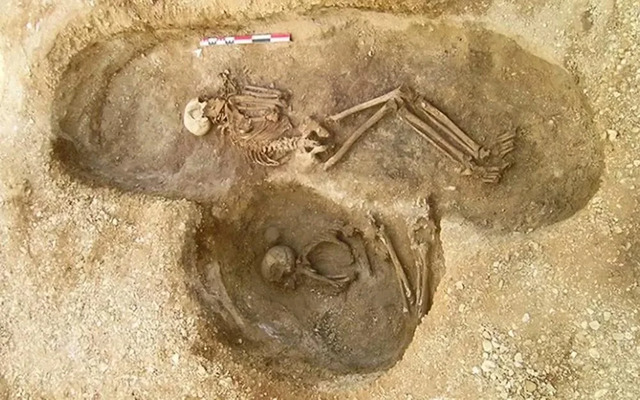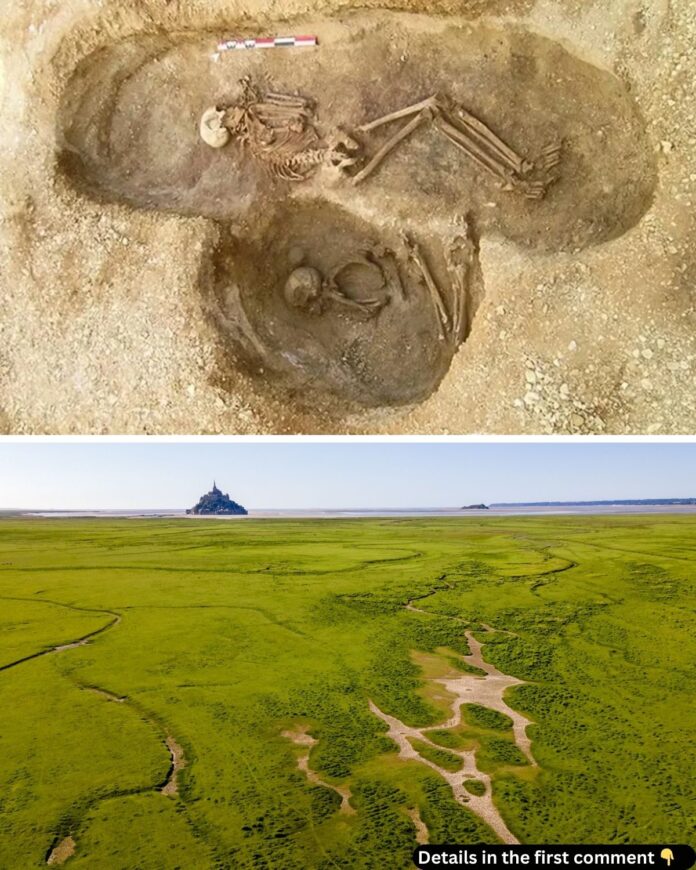The discovery of a 6,700-year-old burial site in Gurgy, located in the Paris Basin of northern France, has reshaped our understanding of Neolithic society. Using cutting-edge DNA analysis, researchers have reconstructed the largest genetic family tree ever created, revealing intricate details about ancient social organization and kinship patterns. This extraordinary breakthrough sheds light on the lives of early farming communities, offering a glimpse into their social networks, migration patterns, and cultural practices.
Gurgy: A Gateway to Neolithic History
The Gurgy site, excavated between 2004 and 2007, initially drew attention as one of the largest Neolithic burial grounds without monumental structures. Situated in the Paris Basin, a region known for its prehistoric significance, the site contained the remains of 128 individuals, ranging from infants to adults. These burials date back to approximately 4,850 to 4,500 BCE, a period when humans transitioned from nomadic lifestyles to settled farming communities.

What sets Gurgy apart is the meticulous organization of its funerary space. Unlike overlapping or chaotic burials observed in other sites, Gurgy’s graves demonstrated careful planning. This suggested a close-knit community with a clear understanding of familial and social relationships—a hypothesis that would later be confirmed through DNA analysis.
Reconstructing the Largest Neolithic Family Tree
Researchers analyzed the genomes of 94 individuals from the Gurgy site, employing advanced techniques such as genome-wide data sequencing, mitochondrial DNA for maternal lineages, and Y-chromosome data for paternal connections. The result was two elaborate family trees, the largest of which connected 64 individuals across seven generations. A smaller tree linked 12 individuals over five generations.
The larger family tree is a groundbreaking achievement in genetic archaeology. It not only highlights the intricate ties between individuals but also underscores the advanced level of social organization in Neolithic societies. By combining genetic data with burial patterns, researchers revealed a society where kinship dictated burial proximity, with closer relatives buried nearer to each other.

Watch as scientists reconstruct the largest-ever genetic family tree for Neolithic people in France using ancient DNA – explore this groundbreaking discovery and its implications for understanding early human history!
Patrilocality and Female Migration
One of the most fascinating insights from the Gurgy site was the discovery of patrilocality—a practice where men remained in their birth communities while women migrated from other groups. Genetic analysis revealed stark differences between male and female lineages. While men shared common ancestry, women displayed diverse origins, indicating they came from various external communities.
This pattern of female migration likely served as a strategy to prevent inbreeding and strengthen alliances with neighboring groups. Maïté Rivollat, the study’s lead author, suggested that this practice was key to the community’s social and genetic stability. The absence of related women in the burial site further supported the idea of a structured exchange system with other communities.
Monogamy and Family Structures
The Gurgy site also provided compelling evidence of monogamy in Neolithic society. Researchers found no half-siblings among the buried individuals, indicating that individuals likely had one partner during their lifetimes. This monogamous structure contributed to strong familial cohesion and social stability.
Moreover, the demographic profile of the Gurgy community pointed to large family sizes and high fertility rates. The presence of numerous full siblings who reached reproductive age suggested a stable environment with sufficient resources for health and nutrition. This challenges the notion of stark divisions between elite and non-elite populations, suggesting that even non-elite families enjoyed relatively favorable living conditions.
The Founding Father and Symbolic Burial Practices

At the heart of the Gurgy family tree lies a “founding father” whose descendants formed the backbone of the community. This individual, identified as the patriarch of the largest family tree, was buried in a unique manner: his skeletal remains were reinterred in the grave of a woman. This secondary burial suggests that his remains were transported from another location, underscoring his significance to the Gurgy community.
The symbolic burial of the founding father reflects the deep reverence Neolithic societies held for their ancestors. It also highlights the importance of lineage and continuity in maintaining social order. The presence of his remains in the Gurgy site indicates that he was a figure of great influence, perhaps a leader or patriarch whose legacy endured for generations.
Health, Nutrition, and Daily Life
The material culture uncovered at Gurgy offers a window into the daily lives of its inhabitants. Animal bones found alongside pottery suggest a varied diet that included both domesticated meat and wild game. This dietary diversity challenges assumptions about the limitations of early farming communities and points to a society that balanced agriculture with hunting and gathering.
Artifacts such as cups, plates, and storage jars, some of which were intricately decorated, indicate a level of private wealth among Gurgy’s inhabitants. These findings suggest that the community was not solely divided into elite and non-elite classes but may have included a middle class with access to resources and craftsmanship.
Implications for Neolithic Studies
The Gurgy family tree is more than a genealogical record; it is a testament to the power of modern archaeology and genetics in uncovering the secrets of ancient societies. By reconstructing these family trees, researchers have illuminated the social organization, migration patterns, and cultural practices of a Neolithic community.
The findings from Gurgy challenge long-held assumptions about early farming societies, particularly regarding social cohesion and the role of women in community-building. The evidence of patrilocality and female migration underscores the importance of interconnected networks in sustaining Neolithic populations.
Video
Discover the world’s oldest family tree, traced back to the tombs of Neolithic Britain – watch the video to explore this incredible genetic breakthrough and its impact on our understanding of ancient societies!
Conclusion
The Gurgy burial site represents a milestone in the study of prehistoric societies. Through meticulous excavation and groundbreaking DNA analysis, researchers have pieced together the largest genetic family tree ever reconstructed, providing unparalleled insights into the lives of Neolithic people.
From the symbolic burial of the founding father to the evidence of monogamy and female migration, the discoveries at Gurgy paint a vivid picture of a society that thrived on familial bonds and social cooperation. As archaeological techniques continue to advance, sites like Gurgy will undoubtedly reveal even more about the complexities of human history. For now, the largest Neolithic family tree stands as a testament to the enduring ties that connect us to our ancient past.
